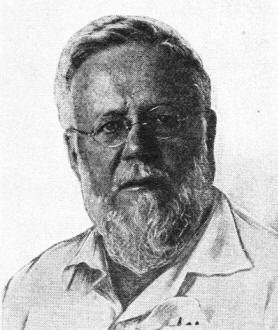Men Who Made Radio: Reginald A. Fessenden
|
|
Radio-Craft magazine ran a series of feature articles on "Men Who Made Radio." The January 1930 edition honored Canadian engineer Reginald A. Fessenden, who is credited for making the first wireless voice transmission. Mr. Fessenden worked with both Thomas Edison and George Westinghouse, eventually inventing the rectifying electrolytic detector, which was the successor of the coherer and the precursor of the crystal and the tube detectors. His interest in communications extended beyond radio to include sonic devices like sonar, a field in which he also gained significant renown. See other "Men Who Made Radio" : Sir Oliver Lodge, Reginald A. Fessenden, C. Francis Jenkins, Count Georg von Arco, E. F. W. Alexanderson, Frank Conrad, Heinrich Hertz, James Clerk Maxwell Men Who Made Radio: Reginald A. Fessenden In the ranks of the scientists and inventors who have made radio what it is today, it is hard to classify the subject of this brief sketch as belonging more to one division than to the, other. In both roles, he has been one of the most striking figures; and his versatility, be it said, has extended throughout many fields. There is little which he has touched, in the field of knowledge, to which he has not made distinct contributions. Yet, pre-eminent among Professor Fessenden's achievements are the developments which he made in the art of radio telephony - that department of radio most interesting for the layman, because it includes broadcasting. Reginald A. Fessenden was horn in Milton, Province of Quebec, Canada, although of Colonial American ancestry. While yet a very young man, he became associated with Edison, as an electrical engineer, and later as chief chemist. He later worked with the Westinghouse Company; and in 1893 became professor of electrical engineering in the Western University of Pennsylvania, at Pittsburgh. Here, as early as 1895, he began experimental work with radio waves (or "Hertzian," as they were n known). In 1899 he there made radio-telegraph demonstrations with the idea of facilitating the work of the Weather Bureau. He soon became associated with that organization; and later the technical guide of the National Electric Signaling Co., one of the rival organizations which were then pushing the development of "wireless telegraphy." But Dr. Fessenden, a master of the dynamics of sound - among many other things - saw possibilities in "wireless" of more than telegraphy. The Hertzian waves used in spark telegraphy rose and fell in "damped" oscillation; Fessenden conceived the possibility of generating undamped or "continuous" waves, and imposing upon them the modulations of speech. In 1901 he accomplished this feat, and his was the first human voice to be borne into space on a radio "carrier." To this success, he added that of the rectifying electrolytic detector, the successor of the coherer and the precursor of the crystal and the tube. So, also, Fessenden conceived and patented the idea of the radio-frequency alternator. He worked in this field for years, increasing more and more the world's knowledge of radio, and in 1909 added the rotary spark-gap to his previous inventions, thereby extending the range of "wireless" signals. Among his earlier suggestions we find, as well, the use of the principle of heterodyning; which was compelled, however, to wait the development of the tube oscillating circuit for its perfected application. In 1909 Fessenden successfully demonstrated radio telephone operation between Brant Rock, Massachusetts, and Washington. Replacing his radio-communication work by other activities, Dr. Fessenden has since devoted a considerable portion of his time and genius to the subjects of navigation and signaling at sea. How well he succeeded in this field may be shown by the fact that, less than a month ago, the medal for promotion of safety of life at sea, awarded to him by the American Museum of Safety; was bestowed upon Dr. Fessenden for more than a dozen nautical safety devices: including the fathometer, which permits taking soundings without the use of a line, by reflection of sound waves; direction finders; and many other electrical and sonic inventions. The medal was received at an official gathering in New York by his son, Major Reginald A. Fessenden, Jr., in the absence of the doctor, who is now in Bermuda, the scene of his earliest post-college activities. It may be of interest to know that, in addition to many works on mathematics and other forms of pure science, as well as its applications, Dr. Fessenden has made contributions to archeology and to ancient history. The interests of his restless and inquiring mind, in fact, have been almost universal; but no other branch of human activity, after all, is so deeply indebted to him for practical contributions as the science and art of radio telephony.
Posted January 4, 2024 |
|

